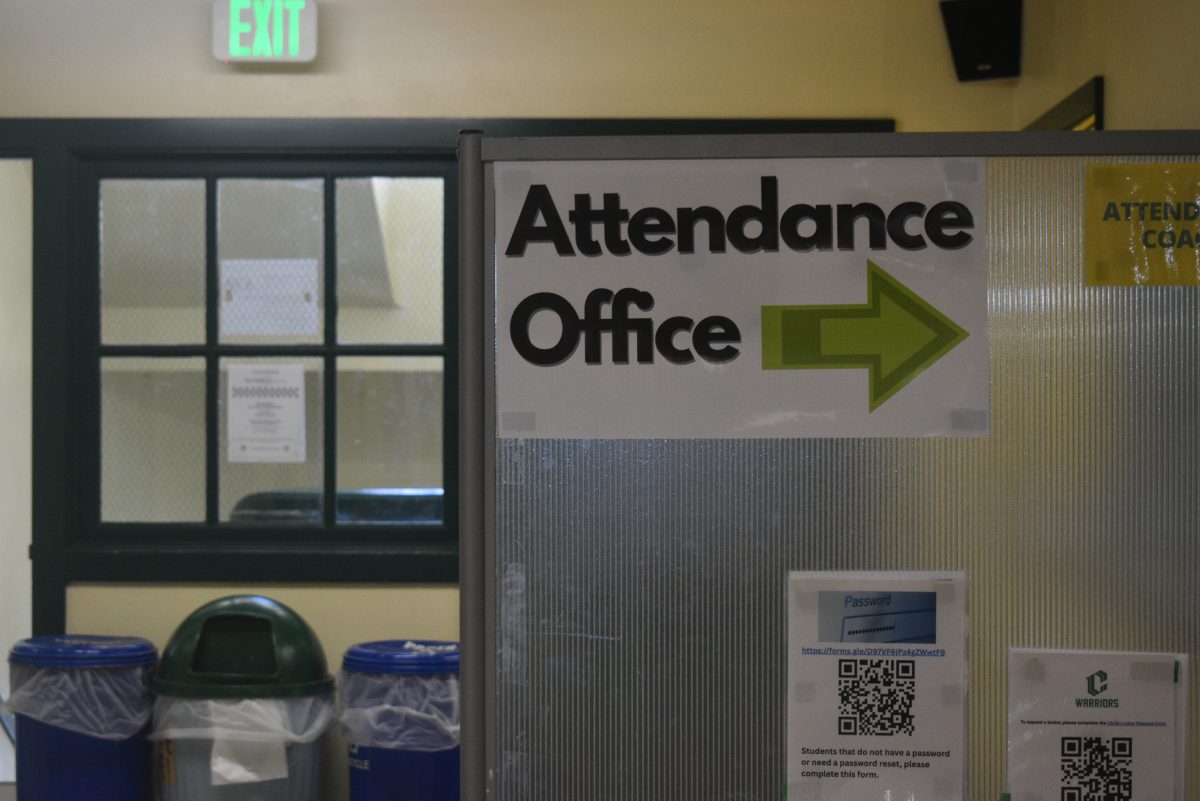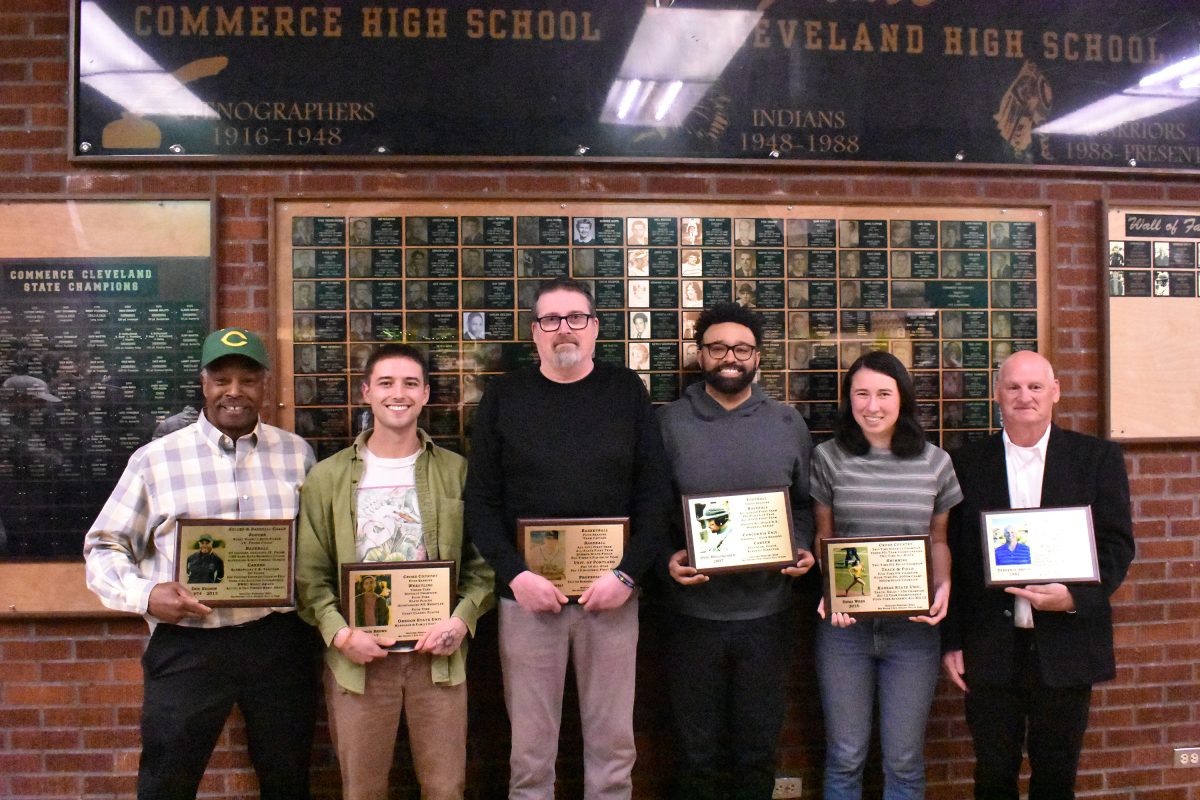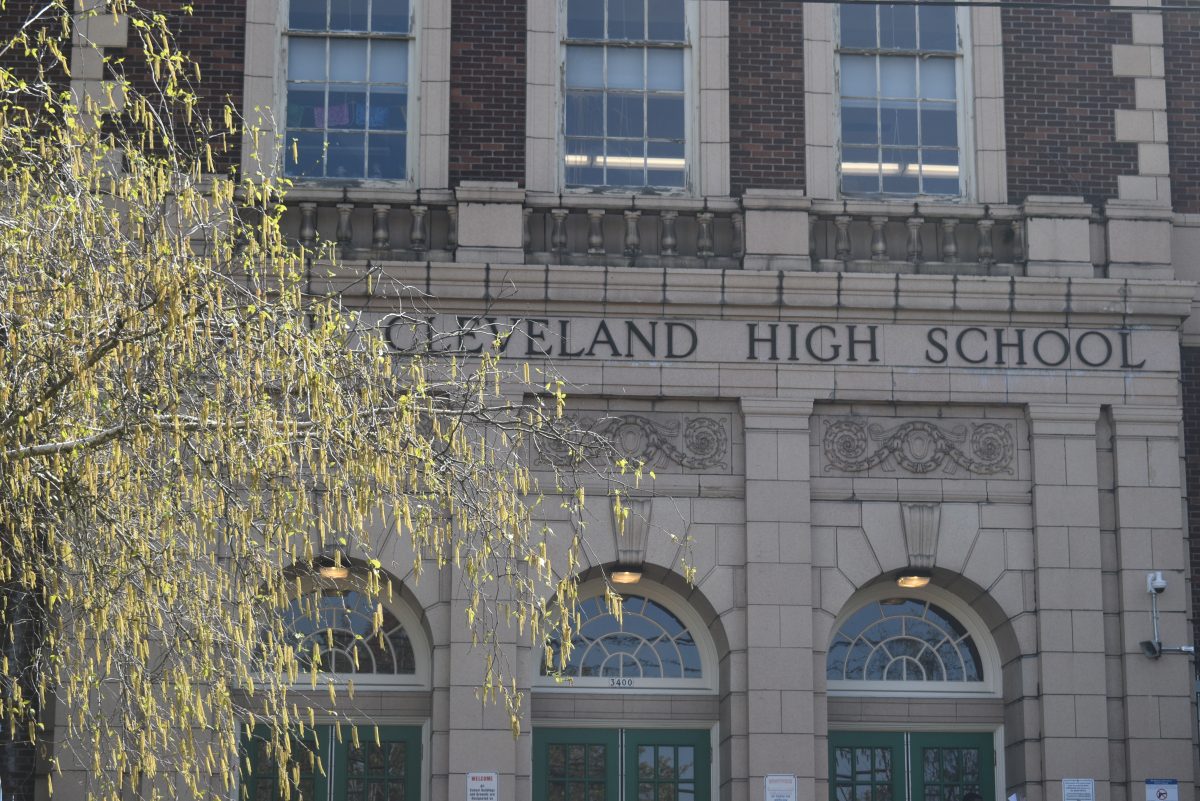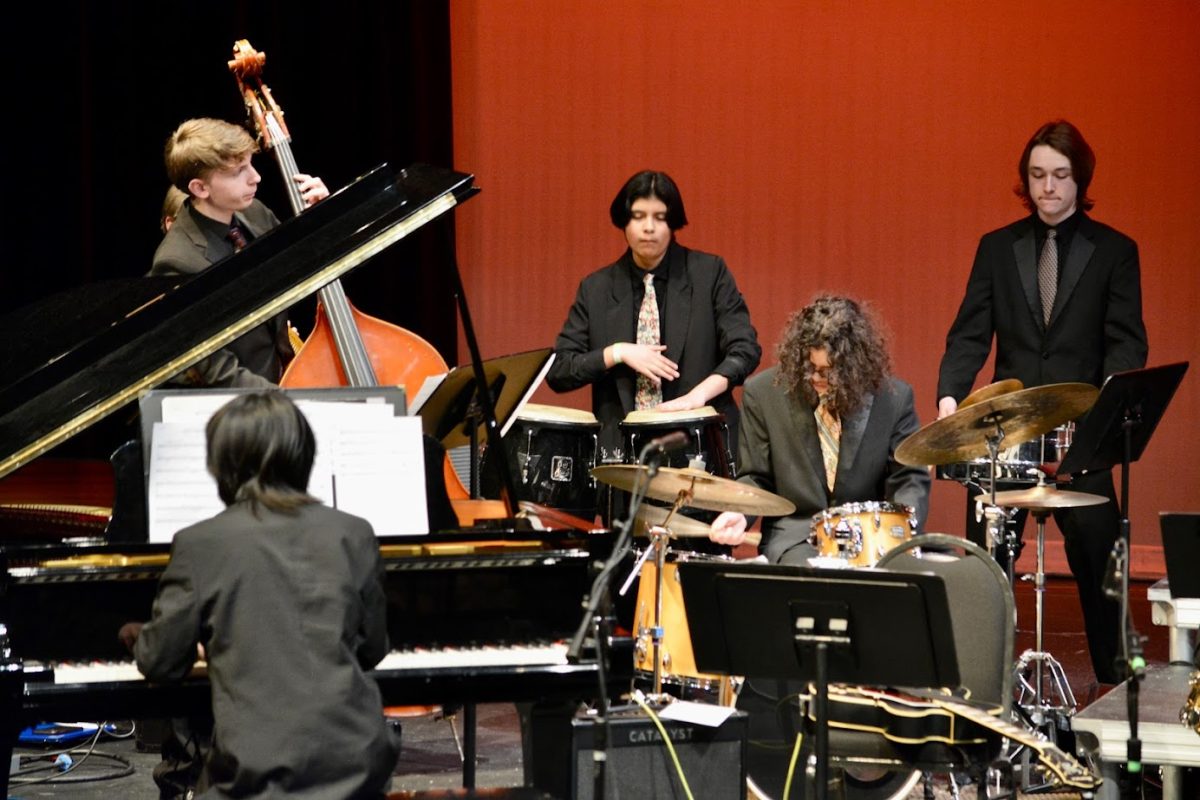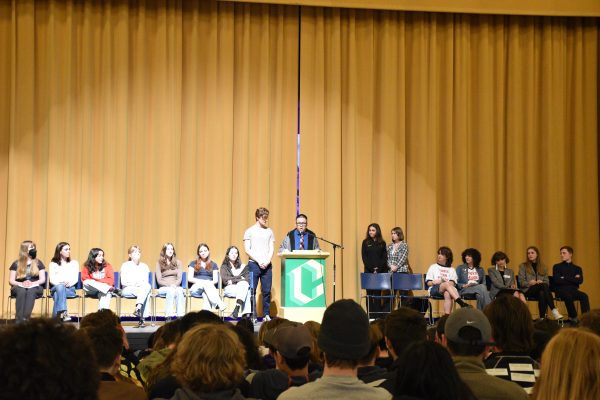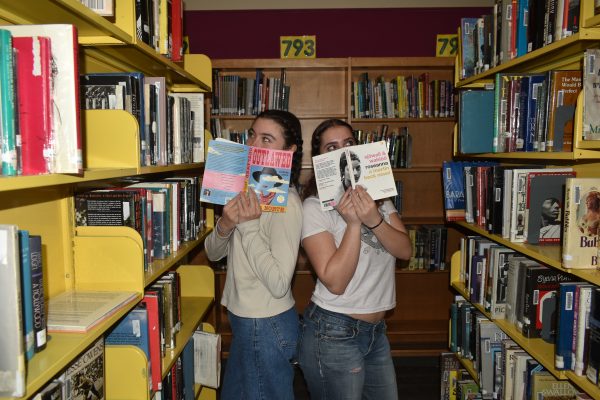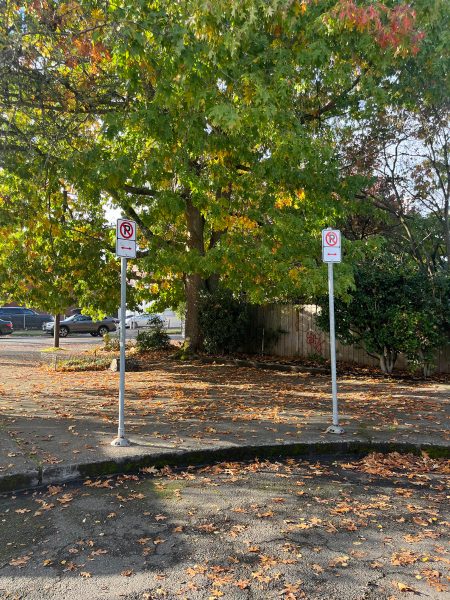Hall Decs: The Waste of an Honored Tradition

Clarion photo Ally Grimaldi
We need to speak for the trees!–As hall decs come down, our dumpsters overflow with the trash and paper we wasted for a moment of competition.
October 22, 2016
Homecoming hall decorations is incontestably a diehard tradition—at least, it is in the most literal sense of the word: death.
Annually, in celebrating our coming home, Cleveland students orchestrate the dynamic and elaborate “hall decs,” transforming their class hallway into another world. It is a legacy unlike any other, both for its electric creativity and for its excessive wastefulness.
This year alone, Cleveland students purchased a total of nine rolls of heavy-duty, 50-pound kraft paper. The number may not seem like much, but its entirety equates to 27,000 square feet of paper, an area large enough to cover the floor of nearly 11 average-sized homes. Additionally, purchases on paper alone totaled to $721.59, a sum of money great enough to feed nearly 8,000 mouths, according to Feeding America.
Kathleen Fuller, Cleveland I.B. environmental systems and societies teacher, described the waste as “heartbreaking.” Said Fuller, “As a student of Cleveland, [hall decs] was one of my absolute favorite things that we did. I just thought that it was always this really great bonding experience; it got everyone involved. It’s still an awesome memory that I have, but at the same time, it was also super wasteful. I remember spending months and months preparing for something that’s up for 15 minutes, and then you tear down and throw in the trash.”
This year, the senior class spent $70 on dirt alone, purchasing 48 bags of soil according to Emma Rozman, co-senior class president. Not only could the dirt have been obtained for free, but it also could have created meals for 770 people in need, epitomizing the hall decs-perpetuated negligence of sustainability. After the judging of the hall, students were given the instructions to shovel all dirt into the school dumpster. Melissa Patterson, senior and environmental activist, protested these actions at the scene of the event. “Let’s just put [the dirt] in the landfill where it’s going to overflow and runoff is going to occur and kill billions of creatures!” said Patterson, facetiously. “Don’t buy dirt just to put it on the ground and talk about, ‘Oh, we can’t recycle dirt.’ Dirt is literally recycled material that comes from the earth. You put it back into the earth where it came from.”
To add insult to injury, the senior class’s theme was “The Lorax” by Dr. Seuss, a storybook that contests deforestation, pollution, and other environmental issues. “It is the most deeply seeded irony,” said Patterson. “Why is habitat destruction, the ultimate destruction of the planet and a miserable lifetime for our future generations, worth 15 minutes of arbitrary dancing around as the ironic Lorax?”
In the most literal sense, hall decs is a diehard tradition; the tree death-count is depressing. In order to picture what the Douglas fir and pine casualties are, one must determine the standard size of a tree. This is nearly impossible, as trees, much like people, come in all shapes, sizes, and textures. Similarly, it is difficult to equate trees to paper, since paper is manufactured in different ways and made into a wide selection of varieties. For the case of hall decs, we will measure a standard tree at the size of 40 feet tall with a six to eight inch diameter. For comparison, our tree would be approximately the size of a four-story building with the width of a standard soccer ball. The variation of paper purchased is described as “heavyweight and durable” Pacon Spectra Art Kraft Duo-Finish Rolls, which classifies the paper as coated non-recycled kraft paper.
According to measurements, our tree would comparatively stand at 16.64 feet tall, the size of one and a half standard basketball hoops. The death of our tree may seem like a minute casualty. However, at the standard rate of growth, it would take the entire life of a freshman to regrow the tree that we wasted in 15 minutes.
Furthermore, the effect of paper production is extensively disturbing. According to Cleveland State University, the paper industry is the second largest consumer of energy in the world, and uses more water to produce one ton of product than any other industry. To create a single sheet of copy paper, 13 ounces of water are used. In Cleveland’s purchase for hall decs, we wasted 2,815.5 lbs of water, nearly one and a half tons.
Similarly, paper is the number one least recycled item; on average, paper accounts for nearly 35 percent of discarded materials. Even more distressingly, paper used in hall decs cannot be recycled because of the tape used to hang the paper, and also because of its butcher paper-like texture. Conjointly, hall decs paper alone generated 39.46 lbs of waste.
Through the production of our hall decs paper, Cleveland also emitted 98.437 lbs of greenhouse gases into our air. Trees are able to help aid this destructive nature by “eating” carbon dioxide. Unfortunately, the United States alone cuts down 178 million trees yearly to produce the very paper that is causing the greenhouses gases.
These statistics only account for the production of paper purchased; they do not measure all of the other materials that were wasted and thrown away. It is estimated that each class spends $500-$1,000 on hall decs each year depending on the theme, a cost much too exorbitant to be reasonable. Similarly, said Fuller, seemingly miniscule processes of paper production can have great consequences. “You have to think about the amount of energy that went into growing the plants, harvesting the plants, transporting the plants, processing—the jobs that you require to do that. Then it’s also bleached and dyed and rerolled, and then transported back to the school. There’s lots of transportation energy associated with that much product,” she said.
When asked, most hall decs participants did not disagree that the event is destructive. “Do I think it’s wasteful? Yes,” said co-Senior Class President and co-Senior Hall Decs Coordinator Taylor Lewis. “Do I think that it’s worth it? Definitely.” Rozman emphasized the importance of hall decorations, saying “[Hall decs] is a way for the student body to come together and meet others that they wouldn’t talk to.”
While seemingly dire, hall decs does serve many great purposes, like creating unique bonds between students, developing shared memories, and raising collective triumph. Best said by Fuller, “[Hall decs] is one of my favorite things about Cleveland. Cleveland hall decs don’t exist at other places, so it is this awesome legacy piece, but I would like to see it done in a more sustainable fashion… I love hall decorations, but I think that we should reevaluate the way that we do it.”
Patterson agreed, saying, “[Hall decs] should be reformed to be more sustainable and kinder to the environment, people, and animals. We should care about the future! Finger pointing isn’t going to get us anywhere. We need to work together to fix this problem.”
As to reformation of hall decs, Lewis and Rozman suggested the use of recyclable paper, among other things. “It can be wasteful,” said Rozman, “but if the school gave us more clean up time, then we could lessen the waste product.”
Even so, commented Rozman, “Hall decs have been a tradition at Cleveland for a very long time now. Getting rid of it completely would hurt the Cleveland community greatly. People love hall decs. I understand that it’s wasteful and it should be changed to help the environment, but you can’t get rid of hall decs completely.”
By no means should homecoming hall decorations be forgotten or eliminated altogether; it is a beautiful legacy that is unique to Cleveland, and the school spirit and creativity that hall decs perpetuates are something of which students should be proud. That being said, we cannot ignore that there is a problem with the grotesque wastefulness that hall decorations promote. Suggested Lewis, “Don’t get rid of it, reform it.”
This year, the senior class took that idea to heart in the creation of their float decorations, working hard at inspiring and maintaining the true spirit of “The Lorax.” Traditionally, each class brings in a truck or trailer garnished with paper, lights, and decorations galore to show off their Cleveland pride to homecoming football game fans. Instead of using a vehicle that runs on gas, the senior class designed a parade of bikes and scooters, emphasizing the importance of an eco-friendly approach to the long-lived tradition.
The main purpose of hall decs is to create a collaborative community and to celebrate our coming home. It is to fashion something creative and dynamic, and to encourage strong relationships between students. As someone who has participated in this beautiful tradition for the past four years of high school, I know that there is infinite power behind our channeled energy. Instead of destroying 27,000 square feet of paper, wasting 2,815.5 lbs of water, generating 39.46 lbs of waste, emitting 98.437 lbs of greenhouse gases, and killing our freshman-aged tree, we could repurpose that productivity into a much greater outlet of celebration: bettering our community. We could fill our hallways with murals rather than paper. We could educate our community about issues important to our hearts and imperative for our futures. We could raise money to donate to charities in need.
“There are other ways to do [hall decs] that aren’t destroying habitats, ruining our planet, and destroying vital resources,” said Patterson. “I think it would be a good idea to set it up in a way where we can use set design to create a scene or a play. It’s not going to be nearly as wasteful.” The possibilities are truly endless.
Homecoming might be a diehard tradition, but tradition should not be set in stone—or in paper. Tradition should be as dynamic as the students who uphold it, as kaleidoscopic and multifaceted as those who create it. Most important, our coming home celebration should be about bettering our home—and what better way to celebrate than by protecting our earth, the greatest home of all?
The Clarion will be taking suggestions for the reformation of hall decs! Look for the drop box in room 368 or leave a comment online.





